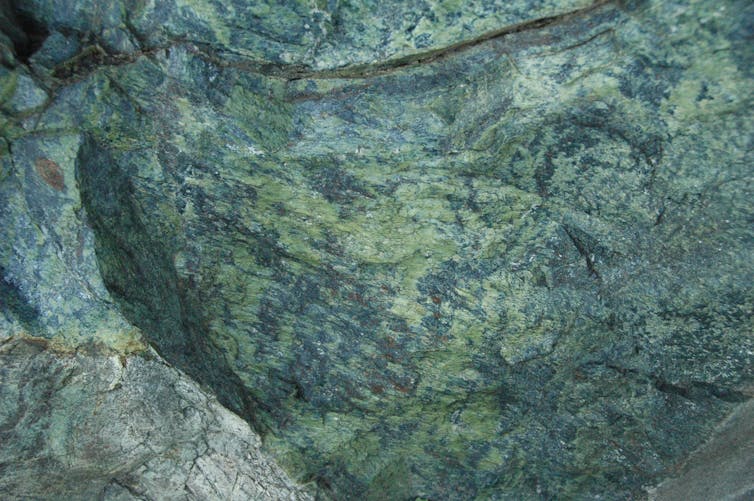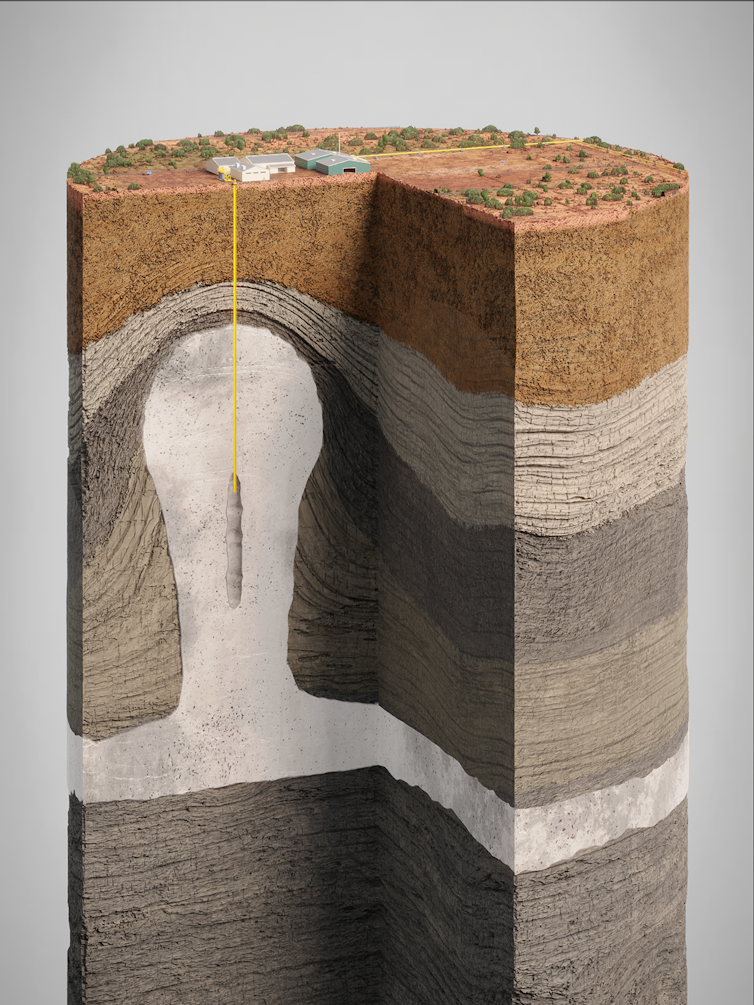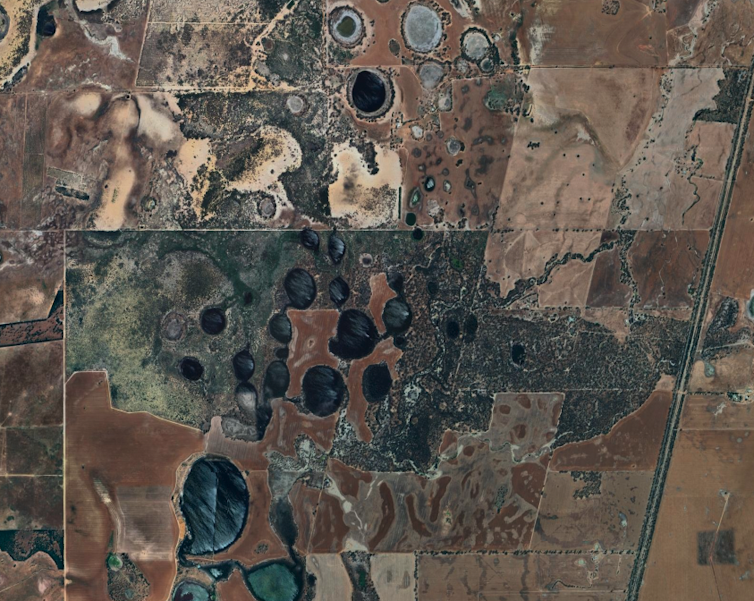Hydrogen comes in an ever-increasing range of colours. Green hydrogen, made by cracking water into oxygen and hydrogen. Blue hydrogen, made from natural gas with the carbon emissions captured and stored. Grey hydrogen, using natural gas with carbon dioxide emissions released to the atmosphere.
But there’s one type few people have heard of – white or gold hydrogen, produced by natural processes that occur deep underground.
The main methods of producing hydrogen uses an energy source to convert methane, coal or water to hydrogen, with byproducts such as oxygen or carbon dioxide.
But this natural hydrogen could mean an easier route. Viacheslav Zgonnik, a researcher and head of a natural hydrogen company, has told Science he believes “it has the potential to replace all fossil fuels”.
Is that really possible? And why are we only just finding out about it? Here’s what we know.
The race for lots of hydrogen
Hydrogen has long been touted as a way to help us get to net zero. It’s energy-dense and able to be used in vehicles, for electricity generation and industrial processes.
But some experts are sceptical, given the current costs to produce it and challenges for adoption, to say nothing of the emissions created with the most common production method – blue hydrogen from natural gas.
That’s why natural hydrogen is getting so much attention, given it would have very low emissions.
So where’s it found? Often, underground alongside other gases such as methane and helium. It’s a lot like oil and natural gas, in that sense.
But unlike oil and gas, we haven’t had anywhere near the same experience in exploring for hydrogen.
What we know so far is that natural hydrogen can be produced in many different ways as different rocks and minerals interact underground.
Ancient, iron-rich rocks can produce hydrogen. So can minerals such as serpentinite, and basalt produced from magma emerging in the deep ocean, or from organic-rich rocks such as coals or shales. And life, too, can be involved. Deep in the earth live microbes which can eat – or produce – hydrogen.
Our research has suggested finding sources of hydrogen isn’t likely to be the main issue for extraction. Over the last decade, natural hydrogen experts have exponentially increased their estimates of how much of this useful gas there is out there.

James St John/Flickr, CC BY
So where could we extract it?
Hydrocarbons such as oil tend to float up from the deeper rocks where they are produced until trapped in porous rocks called reservoirs.
But what about much lighter hydrogen? It moves upwards wherever possible – but it’s so mobile, it can easily slip through many rocks and escape to the atmosphere. It may only be worth recovering if there are big enough reservoirs where it has accumulated under, say, an impermeable rock layer like shale or salt. Salt caverns are already being explored as a way to store green hydrogen.

Geoscience Australia, CC BY
Researchers are working to figure out what actually acts as a barrier to hydrogen flowing underground.
At present, it’s early days. The industry has just one known example of hydrogen accumulating in commercial amounts. It was found by accident in Mali, West Africa, in the 1980s, when drilling for water uncovered shallow but significant volumes of hydrogen.
Public production and pressure monitoring suggest the Mali gas field has seen no depletion to date. By contrast, oil and gas reservoirs tend not to refill themselves on a timeframe that matters to us.
Will prospecting for hydrogen be like the oil rush?
When prospectors realised the importance of fossil fuels such as oil and gas, they turned first to surface seeps. Seeping oil and gas at the surface meant a source rock like shale was expelling hydrocarbons.
Backtracking from surface seeps is one way to look for naturally occurring hydrogen. Already, researchers have used high-resolution satellite imagery to look for enigmatic features often referred to as fairy circles.
For decades, researchers have debated what causes these circles. Termites? Rain? Plants? One answer might be – hydrogen seeps.
Natural hydrogen exploration companies in South Australia are already using fairy circles to identify possible sites. Others are turning to the history books – one borehole on Kangaroo Island drilled in 1921 produced up to 80% hydrogen.

Google Earth, CC BY
Why are we only finding this now?
We weren’t looking. Until recently, the world’s vast reserves of shale and tight gas went unobserved for decades. But as technology progressed with new drilling, well logging and recovery methods such as fracking, extraction was possible.
From the 1960s onwards, geologists looking for hydrocarbons in sedimentary basins have used gas chromatography to figure out what was present in a gas mix. Previous methods could spot a broader range of gases, but the most common and simplified method left hydrogen and helium undetectable. So hydrogen may have been there the whole time.
When we drill looking for oil and gas, we drill deep to take samples – often 1,500 to 3,000 metres. But as the Mali find shows us, hydrogen can exist much shallower at under 500 metres and in different rock types. That means our current data sets are skewed.
Are we going to see a hydrogen rush?
It’s possible. A new generation of explorers are already scouring South Australia, looking for good prospects. That’s because the state is currently the only Australian jurisdiction with laws in place to enable hydrogen exploration.
That’s not to say natural hydrogen is a guaranteed winner. There’s much we don’t know, such as how common it is and how easy it is to extract. It’s also one of many potential pathways being explored to help us toward decarbonisation and net zero milestones.
What we do know is that to make this a reality will mean an open mind – and a willingness to try new approaches. ![]()
Linda Stalker, Senior principal research scientist, CSIRO
July 4, 2023
This article is republished from The Conversation under a Creative Commons license. Read the original article.





